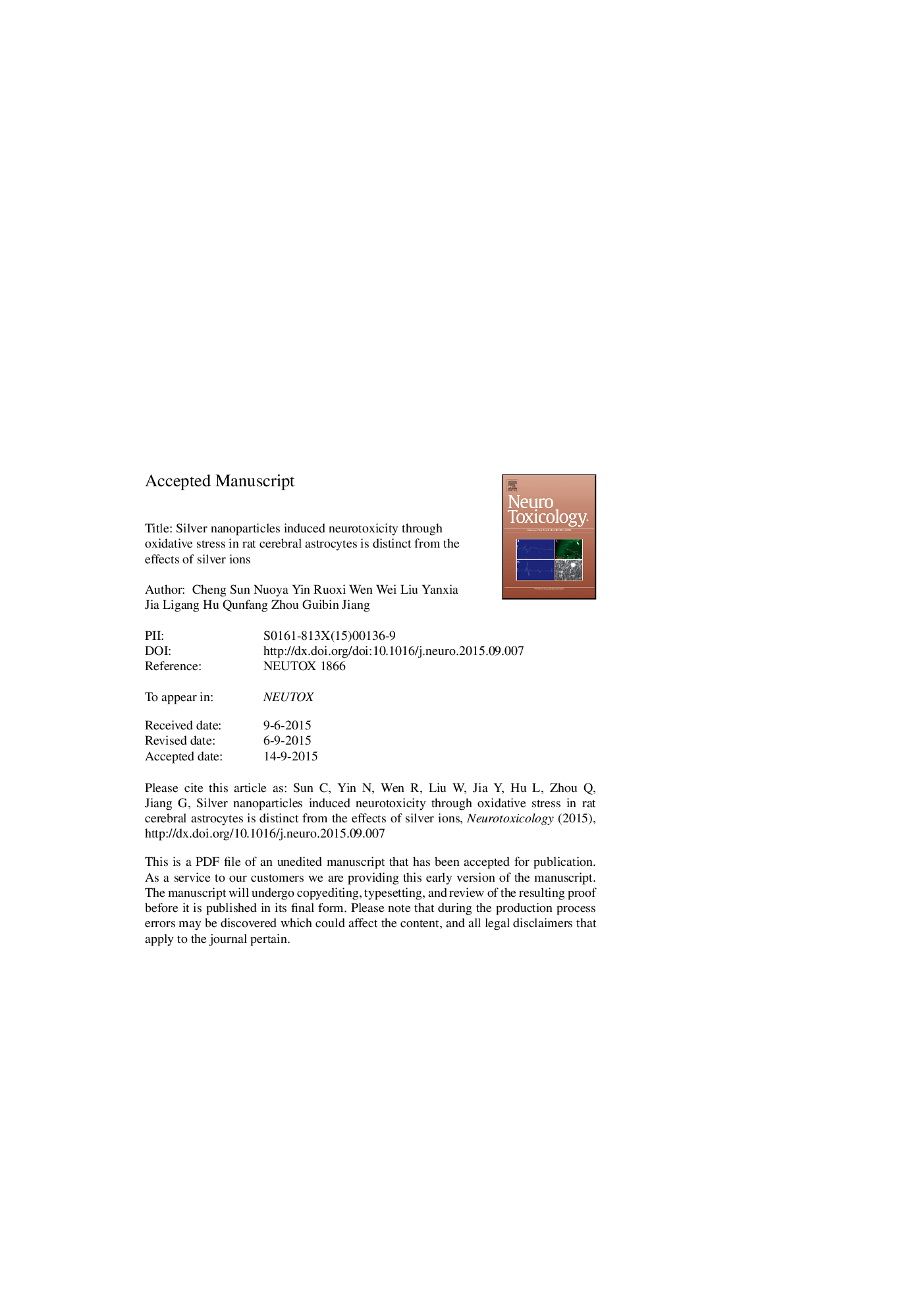| Article ID | Journal | Published Year | Pages | File Type |
|---|---|---|---|---|
| 5854696 | NeuroToxicology | 2016 | 42 Pages |
Abstract
The rapid development of silver nanoparticles (AgNPs) based products has raised increasing concerns in view of their potential hazardous risks to the environment and human health. The roles of the released silver ions in AgNPs induced cytotoxicities are being hotly debated. Using rat cerebral astrocytes, the neurotoxicological effects of AgNPs and silver ions were investigated. Acute toxicity based on Alamar Blue assay showed that silver ions were considerably more toxic than AgNPs. Comparative studies indicated that AgNPs increased caspase activities and induced cell apoptosis under cytotoxic level of exposures, while silver ions compromised cell membrane integrity and dominantly caused cell necrosis. Cellular internalization of silver provided the basis for the cytotoxicities of these two silver species. In contrast to silver ions, intracellular reactive oxygen species (ROS) generation occurred in time- and concentration-dependent manners in astrocytes upon AgNPs stimulation, which caused subsequent c-Jun N-terminal kinases (JNK) phosphorylation and promoted the programmed cell death. Non-cytotoxic level of AgNPs exposure increased multiple cytokines secretion from the astrocytes, indicating that AgNPs were potentially involved in neuroinflammation. This effect was independent of silver ions as well. The distinct toxicological effects caused by AgNPs and silver ions provided the solid proofs for the particle-specific effects which should be concerned regarding the accurate assessment of AgNPs exposure risks.
Related Topics
Life Sciences
Environmental Science
Health, Toxicology and Mutagenesis
Authors
Cheng Sun, Nuoya Yin, Ruoxi Wen, Wei Liu, Yanxia Jia, Ligang Hu, Qunfang Zhou, Guibin Jiang,
